Features
The Queen Of Dance
Janet Jackson Albums Ranked from Worst to Best
by Peter Piatkowski
On April 14, 2023, Janet Jackson embarked on her tenth concert tour, Janet Jackson: Together Again, celebrating the singer’s 40 years in the music industry. The epic concert includes over 30 of Jackson’s biggest hits while paying tribute to a career that has created some of the most memorable moments in pop music history. Jackson is a song-and-dance woman and a brilliant performer who lights up the stage with her charisma and stage presence. With her longtime collaborators Jimmy Jam & Terry Lewis, Jackson wrote inspiring and moving songs with perfect pop hooks and indelible melodies. She sang the songs with a soft and beautiful croon, imbuing her songs with messages of self-empowerment, pop feminism, and sensuality. And, like the greatest contemporary pop artists, Jackson is a master at reinvention, growing, and changing as a performer.
Jackson was born in Gary, Indiana, the youngest of the nine Jackson siblings. Her brothers became Motown superstars as the Jackson 5, scoring number-one hits like “I Want You Back,” “ABC,” and “I’ll Be There.” Though all the brothers were supremely talented, Michael stood out with his genius. A child prodigy, Michael Jackson exhibited a once-in-a-lifetime talent and would grow up to become the greatest entertainer of the late 20th century. In the summer of 1976, the Jacksons starred in a variety show featuring 10-year-old Janet Jackson, who joined the family act along with brother Randy and sisters LaToya and Rebbie. The Jacksons variety show is captured in amber: corny jokes, cheery musical numbers, and ‘70s celebrity guest stars date the show. However, it was clear that aside from Michael, the Jackson family had another superstar talent in Janet. She stole the show with her precocious talent, entertaining audiences with her silly impressions of Mae West, Cher, and Toni Tennille. Normal Lear spotted the young Janet and hired her to join the cast of Good Times for its final two seasons. From there, Jackson established herself as a TV actress, scoring a recurring role on Diff’rent Strokes and starring for one season on the television spin-off of Fame.
While building her resume as a character actress on television, Janet’s father, Joe Jackson, decided she would join the family business and record pop music. In 1982, she released her first album on A&M Records, Janet Jackson. The album spun off five singles, including the top-ten R&B hit “Young Love,” but the record didn’t sell well overall, so Jackson returned to the studio two years later to record her sophomore album Dream Street. The second album did worse than the first, though she scored another top-ten R&B hit with “Don’t Stand Another Chance” (produced by brother Marlon and featuring background vocals by her brothers, including Michael).
Jackson’s indifference to her recording career was evident by the quality of her first two albums. Her attitude towards them was that she was placed in front of a microphone and ordered to sing songs handed to her by the label. For her third album, Jackson fired her father as her manager and hired A&M executive John McClain, who teamed her with former Time players Jimmy Jam and Terry Lewis. Instead of simply presenting her with a raft of demos, they sought to work with Jackson, collaborating with her, encouraging her to write lyrics and contribute to the production of the record. Instead of simply trilling peppy love songs, Jackson and her partners created songs of female empowerment, looking to the singer’s personal life, particularly her desire to assert her independence. Unlike her first two albums, Control was a huge hit, ultimately selling over 10 million copies and giving Jackson a string of hit singles, including her first number-one hit, “When I Think Of You.” With Control, Jackson successfully danced out of her brother’s shadow and became a superstar in her own right. Like Michael, she was an extremely videogenic performer and took to MTV like a natural. Working with choreographers like future pop diva Paula Abdul, Jackson became a pioneer of MTV with a series of innovative music videos that showed off her elegant dance skills and fashion-forward aesthetic.
After Control, Jackson and Jam & Lewis looked to social justice, the news, and politics for its follow-up, Janet Jackson’s Rhythm Nation 1814. Instead of mimicking the synth-pop funk of Control, Jackson, Jam & Lewis adopted a funky, industrial dance sound. The trio wrote songs about drug abuse, gang culture, racism, and gun violence. Jackson found more success with Rhythm Nation, with another string of hit singles, all reaching the top five on the Billboard charts (four of them hitting number one.) Jackson supported the album with a successful worldwide tour, bringing her MTV-nurtured talents to live audiences. Jackson also won her first Grammy for the Rhythm Nation short film.
After Rhythm Nation, Jackson saw her A&M contract end. She found herself at the center of a bidding war with various record labels, eventually signing with Virgin for a then-record $30 million. For her Virgin debut, Jackson released her fifth studio album, janet. Again, Jam & Lewis worked with Jackson, developing her sound, including sultrier, smoother soul, and hip-hop-influenced beats. Jackson also unveiled a new public image, much more in tune with her sexuality, even appearing topless on the cover of Rolling Stone. Her new lyrics also reflected this growth in sensuality. Like with her previous albums, janet. was supported by a series of elaborate music videos, including the classic “If.” During this time, Jackson returned to her first love, acting, starring in John Singleton’s second feature, Poetic Justice. Jackson earned an Academy Award nomination for her work on the film’s theme song. The album would sell over 15 million copies, and Jackson went on another tour, an epic journey that lasted over a year and a half and included 125 shows.
After janet., Jackson signed again with Virgin and released The Velvet Rope in 1997. The album was another big seller, with a set of hit singles and a massive tour. All for You was released four years later and debuted at number one with over 600,000 copies. Between 2001 and 2004, Jackson went through her first major, career-defining controversy, due to the infamous “wardrobe malfunction” at the halftime show for the 38th annual Superbowl. The disastrous performance led to a significant stall in Jackson’s career, as the FCC fined CBS $500,000 and its parent company Viacom blackballed Jackson’s music and videos, which led to a stark drop in her sales. After All For You, Jackson’s subsequent releases were met with disappointing sales, and none of her singles hit the top ten on the pop charts.
The story of Jackson’s career struggles isn’t just that of an iconic superstar weathering commercial misfortunes. It’s the story of a Black woman pilloried by a culture that set double standards against women of color. Justin Timberlake was on the stage with Jackson during her ignominious performance, and despite his equal participation in the fracas, his career soared. CBS head Les Moonves reportedly was incensed at Jackson’s response to the controversy, particularly her refusal to continuously self-flagellate to his satisfaction. It’s been reported that Moonves used his power to torpedo Jackson’s career in spite.
During this challenging time in her career, Jackson continued to work, releasing albums, touring, and starring in more films, including several collaborations with Tyler Perry. In 2015, she returned to the top of the album charts with her well-received album Unbreakable (her last studio LP to date). In 2019, she joined Michael Jackson and the Jackson 5 in the Rock and Roll Hall of Fame.
Janet Jackson’s career is a long and storied one. Despite being related to the most incredible performer of the 20th century as well as the most illustrious musical dynasty in pop music, Jackson transcended her family ties and became one of the most influential female pop stars of her generation. She sold over 100 million records worldwide and saw 28 of her singles go into the top ten on the Billboard pop charts, with ten songs hitting number one. (She also is the queen of the dance charts with over 30 top-ten hits on the dance charts, with 20 going number one.) She amassed an impressive and enviable oeuvre and has established herself as a pop icon and legend. Her story is one of talent, survival, perseverance, and brilliance.
13. Dream Street (1984)
Jackson returned with a second album after her debut stalled on the pop charts. Sporting dated New Wave-lite and thin synth-pop dance tunes, Dream Street is a forgettable album that failed to give Jackson any hits, or even any catchy or memorable songs. She had yet to have a hand in writing or producing any of the material, and she was still developing a musical persona, so most of the album felt bland and nondescript. Instead of making her mark as a unique artist in her own right, Jackson’s effort fell short and blended with all of the other failed Jackson sibling solo albums of that era.
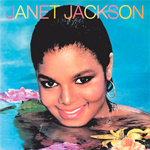 12. Janet Jackson (1982)
12. Janet Jackson (1982)
Jackson didn’t record her first album under duress, but she wasn’t enthusiastic about a recording career, more interested in attending college than being a pop star. The record isn’t bad, and Angela Winbush and René Moore wrote some solid tunes for her. Two tracks, “Young Love” and “Say You Do,” are fine examples of peppy, post-disco pop songs that show some genuine promise.
11. 20 Y.O. (2006)
The press for 20 Y.O. highlighted the 20 years since Jackson triumphed with Control. This tactic backfired because Control was far better than anything on 20 Y.O. That’s not to say that all of the album is bad—there are some gems like the ‘80s throwback “Enjoy” and the sold dance banger “So Excited”—but overall this album felt perfunctory and rote.
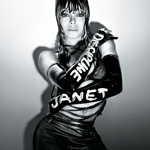 10. Discipline (2008)
10. Discipline (2008)
After a string of disappointing albums, Jackson saw a slight uptick in her output with 2008’s Discipline. Her sole album for Island, Discipline is a good homage to Jackson’s affection for dance and club culture. Though the album won’t stack against her classic work of the 1980s and 1990s, it does feature some great latter-day work like the excellent “Feedback” (which recalls Rhythm Nation-era singles) and the sleek house of “Rock With U.” Discipline is one of Jackson’s more eccentric and esoteric releases, but the eccentricity is very cool. Her work with Daft Punk and Missy Elliott is a highlight of the album and Jackson’s discography (had those songs been released before the Super Bowl controversy, they would have been guaranteed hits).
9. All For You (2001)
Jackson’s last hit album was a breath of fresh air after the tortured magnum opus The Velvet Rope. Instead of delving into the dark themes of depression, All For You focused on lighter ideas. The title track would become one of Jackson’s biggest hits and signature tunes. It bubbles and gurgles on a sample of the disco classic “The Glow of Love” by Change (featuring future soul icon Luther Vandross). There are other great singles like the poppy “Someone To Call My Lover” (which dances on the guitar riff from America’s “Ventura Highway”) and the glossy electro-pop of “Doesn’t Really Matter” (from the 2000 film Nutty Professor II). The album is a tonic after her more personal work, and its scope and ambitions are low-key for a Janet Jackson album. The album cuts are fine, but this is the first moment that the dynamic teaming of Jackson, Jam & Lewis starts to sound frayed.
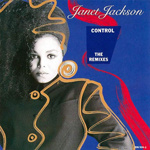 8. Control: The Remixes (1987)
8. Control: The Remixes (1987)
Jackson is primarily a pop artist, but the clubs have embraced her work, and some of her most stirring and exciting moments have been on various remixes. After the breakthrough of her 1986 album Control, Jackson’s label released a remix album in Europe. The UK edition is worth a search because it contains the superior Shep Pettibone remix of “The Pleasure Principle” (it’s really one of the greatest Janet remixes out there). The video mix of “Control” is a bit of a curiosity because Jackson’s vocals are (relatively) unadorned with studio gloss and sound as if they were recorded live. The extended mix of “When I Think Of You” allows for some instrumental passages that show off the ingenious funk-inspired synth-pop that Jam & Lewis created for Jackson’s album. Though not an essential entry in Jackson’s discography (and it’s a shame that the Japan-only single “Start Anew” wasn’t included on this set), it’s a fine reminder of Jackson’s affinity for dance and club culture.
7. janet. REMIXED (1995)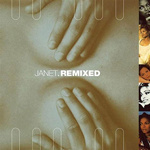
When promoting janet. REMIXED, Jackson shared her love of club culture and dance music with journalists. She cited artists like Deee-Lite as personal favorites of hers. Throughout the 1980s and 1990s, she ruled the pop charts, but she also dominated the dance charts, hitting the top ten on the Billboard dance club charts over 15 times between 1986 and 1995. Unlike 1986’s Control remix album, janet. REMIXED contains remixes of a starry list of guest collaborators, and the album also sneaks in two b-sides, making this an enticing listen. The remixed songs have a strong early ’90s house feel—so lots of strutting percussion, pounding pianos, jazzy keyboards, and flamboyant strings. Two album tracks were remixed for the project, including Nellee Hooper’s shuffling take on the midtempo pop ballad “Where Are You Now” and Dave Navarro’s grungy rock-funk remix of the soul-rocker “What’ll I Do.” The b-sides that are included are fun treats. “On And On” is a soulful summer jam, and “70’s Love Groove” is a sexy bedroom ballad. The best tune on this very good set is the rousing Brothers In Rhythm House Mix of “If,” which removes the shredding industrial funk of the original and unearths some gospel fervor.
 6. Damita Jo (2004)
6. Damita Jo (2004)
Damita Jo is one of Jackson’s most consistent and enjoyable albums, and also one of her saddest because of its (relative) failure due to her blacklisting after the Super Bowl performance. Damita Jo should have been a big hit; the album opened at number two, selling over 380,000 copies in its first week, but muted response to the singles meant the album sold a fraction of 2001’s All For You. It’s a shame because Damita Jo is one of her discography’s brightest, most modern efforts. Jackson and her collaborators (including Jam & Lewis, Kanye West, Télépopmusik, Dallas Austin, Babyface, and Scott Storch, among others) create a shiny, glossy dance-pop record that could have been a force to be reckoned with on the radio. The songs with Jam & Lewis stand out, but West finds some solid musical chemistry with Jackson as well, working with her on the sweet, soulful ballad “I Want You.”. Austin creates the fun, Prince-like “Just A Little While” with fantastic, crunchy, stuttering guitar, and Swedish duo Bag & Arnthor craft a pair of top-shelf dance songs in the easy house-lite of “SloLove” and the classic-Janet dance-pop of “All Nite (Don’t Stop).”
5. Unbreakable (2015)
Jackson returned in 2015 with one of her best sets since her mid-’90s heyday. Unbreakable feels like a deliberate, concerted effort to course-correct some of the missteps she had made; reuniting with longtime collaborators Jimmy Jam & Terry Lewis, Jackson sounds powerful and excited. The songs run the gamut from slow jams and funky R&B tunes to explosive dance moments. The title track is a swinging, ’70s-inspired soul jam, “Dammn Baby” recalls Jackson at her ’90s best, “The Great Forever” is an epic mid-tempo pop tune, and “Well Traveled” offers a passing glance at Nashville country-pop. Most surprising is her adroit stab at Tina Turner-esque rock and soul on “Gon’ B Alright.” The best moment here is the EDM “Shoulda Known Better,” which sounds like a follow-up to the social justice concerns of Rhythm Nation. Unbreakable was a return to form for the diva and a near-classic record.
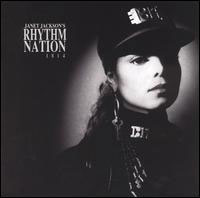 4. Rhythm Nation 1814 (1989)
4. Rhythm Nation 1814 (1989)
Trying to plot a follow-up to a commercial and artistic triumph like Control could have been daunting for Jackson, Jam & Lewis. Control was a personal manifesto, but Rhythm Nation looked outward to society. Instead of returning to synth-pop, Jackson and her team turn to a flashier, starker, New Jack Swing-inspired dance sound that samples guitar riffs, vocal vamps, clattering drums, and ambient city noise to give the record a metallic, urban sheen. Rhythm Nation launched Jackson as a superstar even as its mature themes gave her critical acclaim and respect. On the title track, over smashing percussion Jackson solemnly advocates for racial unity through music. “The Knowledge” urges listeners to remain in school while “State Of The World” tells the story of forgotten victims of urban blight, and Jackson channels a range of socially conscious artists on the touching “Living In A World (They Didn’t Make),” a plea for a world that is safe and kind to children. Beyond the serious themes lie sunnier moments like the disco-funk of “Miss You Much” and the breezy “Alright,” as well as the guitar-laced glam dance-rock of “Black Cat.” Rhythm Nation is an ambitious record that mostly hits its marks, bringing serious issues to light on the dance floor.
3. The Velvet Rope (1997)
The moody, downcast cover of The Velvet Rope immediately signals a different listening experience than other Janet Jackson albums. The album’s first single, “Got ’Til It’s Gone,” features guests Q-Tip and Joni Mitchell for a murky, funky trip-hop pop song that moves moodily on Jam & Lewis’ shuffling beats and features minimal vocal presence from Jackson. It’s a daring choice and a marked departure from Jackson’s typical sound up to that point, an elegant and stunning innovation. On the rest of the album Jackson channels feelings of alienation and isolation with loud and heavy title track, the Living Colour-like metal-funk “What About,” and the rumbling soul of “You.” The record also is one of Jackson’s queerest works as she pays tribute to loved ones who died of AIDS with the neo-disco “Together Again” and decries homophobia on the James Brown-inspired soul “Free Xone.” The Velvet Rope is a challenging album with topics that aren’t typical of dance music, leavened with lighter moments like the pop-funk of “Go Deep” and the disco homage “My Need.” Like Rhythm Nation, The Velvet Rope is a studious and serious album boasting a complex, intricate craft.
 2. janet. (1993)
2. janet. (1993)
The smashing success of Jackson’s previous effort, 1989’s Rhythm Nation, amid evolving musical trends left her with a lot to prove on her fifth album. janet. rode the tremendous success of its first single, the lovely, understated hip-hop jazz of “That’s The Way Love Goes,” which debuted in the top 20 before climbing to number one and staying there for an astonishing eight weeks. A slinky, sensual affair that moved away from the industrial dance of Rhythm Nation, it ushered in a warmer and more organic sound embraced not just by Jackson but her fellow 1980s urban-pop peers Paula Abdul, Jody Watley, Karyn White, Pebbles, and CeCe Peniston. Other songs on janet. that showed a more daring and experimental side to Jackson include the acid-house “Throb,” the hip-hop jazz of “Funky Big Band,” and the industrial metal dance-rock “If.” The album was met with acclaim, huge sales (over 15 million copies), and a Grammy for “That’s The Way Love Goes.” janet. is a landmark album because it spoke to questions of female sexuality, race, gender, fame, and infamy in American pop culture. Best of all, despite its grand ambitions, janet. remains thoroughly enjoyable.
1. Control (1986) 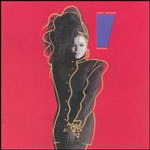
Her first two albums gave little indication that Janet Jackson would become one of the most influential pop artists of her time. Control is one of the essential records of the 1980s because it created a whole new sound and image for Jackson, as well as a template followed by a host of lesser dance divas who followed. Playing a significant role in this leap forward were Jimmy Jam & Terry Lewis, who graduated from the funk band Time to become pioneering producers of funk- and hip-hop-infused synth-pop. Jam and Lewis encouraged Jackson to write as well as perform, to take control over her own voice and musical presentation and play an active role in shaping the album’s production. Songs like “Nasty,” “What Have You Done For Me Lately,” and the powerful title track were feisty and spirited, fueling a pop-feminist classic that told stories of empowerment and liberation from the point of view of an intelligent young woman. Control was also released at the height of the music video, a vehicle that played to Jackson’s strengths as a skillful, charismatic dancer and performer. Control remains one of the most influential dance-pop records of the past 40 years and established Janet Jackson as both a formidable talent and a global star.